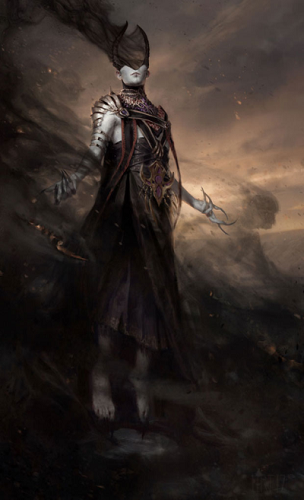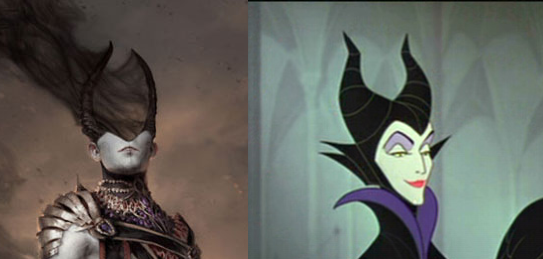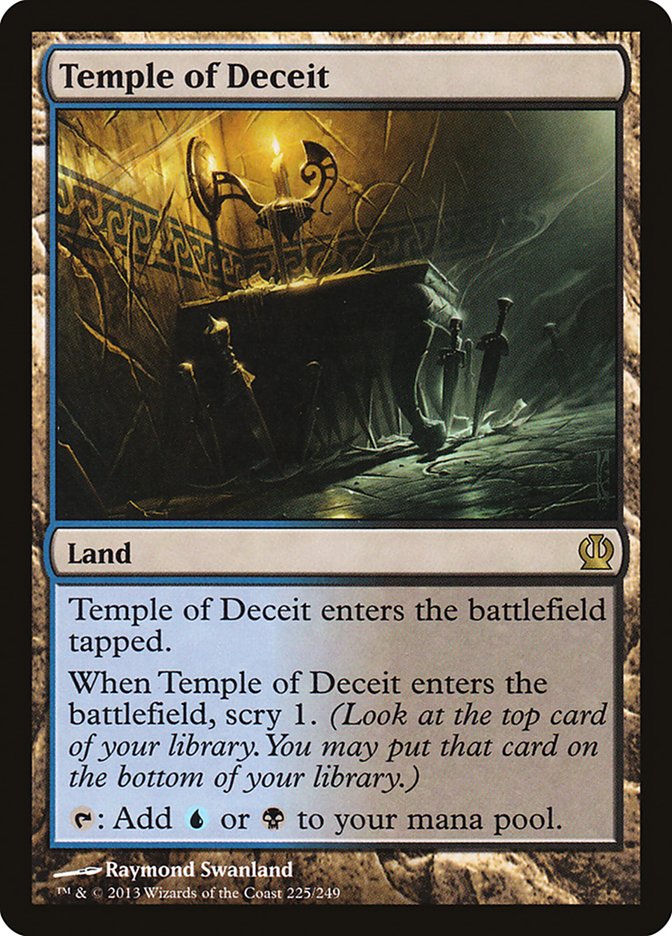Theros has made a funny wave in Standard; with some of 2012-2013 Standard’s biggest bombs gone, the format already looks different. We’re now on the other side of the first major Standard tournament of Theros, and decks have moved from the minds of pros and laypeople alike to prominence. Some cards attained a high level of use at the top tables, while some hyped additions went unheralded.
The addition of the new scry lands proved to make mana bases slightly more interesting than they were before, and one particular scry land in my opinion will be the most powerful in the weeks to come.
U/B is coming back, and yeah, if you read the letters aloud, it rhymed.
Before the end of the last Standard format before the previous one, U/B Control with Nephalia Drownyard and a flood of removal and counters to support it was a challenging deck to beat. The deck was very one note, but thousands of players rushed in to try it. Now, with Cavern of Souls gone and pressing nonblack aggro decks aiming to fill in the faster slots, U/B provides great tools to help its pilots manage all but the most left-field strategies.
Enter one of my favorite planeswalkers to date: Ashiok, Nightmare Weaver.

Let’s take a look at Ashiok from a flavor/aesthetic angle for a moment. It’s hard to tell in that little bitty planeswalker frame, but Ashiok is unique amongst planeswalkers from years past. As you can see from the picture above, Ashiok doesn’t have a face. Nope, just a shadow shroud and a slightly upturned grin.
A lot of speculation has floated around cyberspace about Ashiok’s nature and even something as basic as the gender of this new planeswalker. Doug Beyer, an important member of Magic’s design and writing team, even addressed the issue on his Tumblr. I find this ambiguity fascinating, and I also find Ashiok’s aesthetic entrancing. I was a huge fan of the New Phyrexian aesthetic displayed on such cards as Elesh Norn, Grand Cenobite; Surgical Extraction; and Phyrexian Unlife. I was (and am) a big fan of perceived perfection (the glassy white tone of Ashiok’s skin in this instance) and utilitarian efficiency contrasted with the glaring drastic distances between what appears and does not appear to be human.
Ashiok is a home run for me from a flavor perspective regardless of where it comes from, though I could see an argument for Phyrexia/New Phyrexia. Smart money’s on a relation to Maleficent.

Family resemblance—I think it’s the eyes.
From a gameplay standpoint, I think Ashiok has huge potential. Esper Control has been the stock control deck option for many pros in the new Standard format, and although it fits in this plan, I wanted to bring you two other decks that utilize Ashiok today.
The first one has proven itself against the above control deck and was my first attempt at making an Ashiok list.
Creatures (17)
- 4 Nightveil Specter
- 4 Lifebane Zombie
- 4 Gray Merchant of Asphodel
- 1 Erebos, God of the Dead
- 4 Disciple of Phenax
Planeswalkers (4)
Lands (25)
Spells (14)
Sideboard

Grixis has been dormant since Cruel Ultimatum’s heyday. This combination, which is adept at handling nearly every threat, was outclassed by Jund, Esper, or Bant in terms of effectiveness in the midrange and control arenas for years, but we have several tools to help us outcontrol the control decks. Let’s hop in.
If you’ve seen Brian Braun-Duin cheap mono-black list from a couple weeks ago, the creature base will look familiar. I talked last week about what a great budget option this list provides, and I still believe it’s true. I wanted to utilize the devotion-centric nature of that deck to create powerful enters-the-battlefield threats from a control deck perspective. Lifebane Zombie allows a Peek and a relevant evasive body, and if you find yourself against a deck with green or white creatures, it’s all upside. For the record, I feel more comfortable calling an undead axe-wielding slaughter machine “it.”
Disciple of Phenax, a card I have heard nothing about, is a great Blackmail effect that can eventually evolve into straight Coercion, all while leaving an acceptable aggro blocker behind. Gray Merchant of Asphodel is a huge workhorse, taking chunks of life willy-nilly in a stalled board state. Nightveil Specter is just as easy to cast here, and providing both blue and black devotion is important for Nykthos, Shrine to Nyx and for powerful ramp with a stacked board. Erebos, God of the Dead also relies on it, but the God’s position in this deck is a precarious one. It seemed like an easy in with regards to the amount of black devotion I’m peddling, but he could probably slide out.
As far as noncreatures, right at the front of the list is our main Faceless Butcher, Ashiok. Ashiok, able to resolve on three, can become an immediate threat against aggro and control alike. It can eat a once healthy scry, punish slow draws, and will unerringly draw the ire of your opponent’s counterspell or Hero’s Downfall, which is all I can ask a three-drop to do. Ashiok’s ability to make threats out of nowhere is very exciting in high creature-count decks, but it’s also important when you’re sloughing off a control deck’s win conditions into oblivion. It’s a win-win!
Thoughtseize is another powerful card returning from Lorwyn block and Eternal formats. Adding “creature” makes this thing roughly 4,397 times better than Duress, and it lets you take an on-curve threat away from an aggro deck or a crucial spell from control. Thoughtseize is legitimate removal, so count it as such. Far // Away might be the best uncommon fuse spell from Dragon’s Maze, and it absolutely exudes awesome in a deck like this. Providing early-game tempo as well as a powerful blow out in the late game at instant speed can throw a real monkey wrench against any deck that packs critters. It is so darn flexible, and each of its modes is good enough to cast stag.
Dreadbore, huh? Not Hero’s Downfall, an almost certainly more powerful card? Yes, Dreadbore, and I’ll tell you why. One. Mana. Cheaper. Hero’s Downfall has the advantage of just upgrading Murder, but Dreadbore can kill any mythic threat for two lousy mana. This deck is full of three-drops, and I’ve just got better things to do than hold up three mana to kill your planeswalker. This is a tapout control deck. I don’t draw and pass (if I can help it); I resolve threats. Mana maximization is important for a deck that needs to get a lot done during two main phases, so Dreadbore gets the nod over the better new mono-black dream.
Rakdos’s Return is so good when it’s good. Bad in multiples and fairly expensive and opportunity dependent, this discard spell still pulls its weight nearly every time you cast it. It’s so tempting to play three, but I’ve found I often overflow with three and you rarely need more than one in any given game. Hitting on time is so satisfying though; hey, at worst it’s an expensive Blaze, right? If you’re not playing this in your R/B/X deck, I would argue you are doing it very, very wrong.
Underworld Connections is a good card, and it provides the gas that a tapout control deck needs to stay on top of the board. The life loss is significant; not being able to resolve a healthy Gray Merchant of Asphodel trigger means I will have to be more sparing about my use. Finally, Liliana of the Dark Realms made it in as another noncreature permanent that offers devotion to black and as a relevant ramp and fixer for “mono-black.” She can act as removal and a scary pump too for those evasive creatures I’m packing. Whip of Erebos is just a value engine here, providing solid rebuys of devotion ETBs and Lifebane Zombie triggers. I’m always excited to untap with this.
The sideboard is very straightforward. Duress and Slaughter Games come in against the control decks, ripping out reactive spells and win conditions like the uncounterable champs they are (Duress draws a counter for next to no mana, so I count it). Dark Betrayal stems from a concern that the best creatures I can’t easily deal with will be black. Sure, they could be Doom Blades, but at the time I was not sure what the metagame would hold, so I decided to become narrow and specialized. Nighthowler is a really neat Mortivore effect that can fit in the three or four spot. I haven’t gotten a chance to play with it much, but I like its potential. Also, remember you can bestow it even with no creatures in graveyards; then, when its target dies, it falls off and becomes live!
In playtesting, this deck did poorly (but not terribly) against green-based aggro and black-based midrange, but it held its own against Esper and U/W Control. Thoughtseize is such an essential maindeck tool, but I found myself siding it out in any match where my opponent was getting aggressive. It definitely needed some tweaks, so I decided to shift gears to a favorite wedge of mine and take a different approach.
Creatures (20)
- 2 Scavenging Ooze
- 2 Lotleth Troll
- 2 Desecration Demon
- 3 Nightveil Specter
- 2 Prime Speaker Zegana
- 2 Lifebane Zombie
- 3 Omenspeaker
- 3 Sylvan Caryatid
- 1 Reaper of the Wilds
Planeswalkers (8)
Lands (25)
Spells (7)

This one’s a lot different.
The game plan changed significantly when I included my wild side. A stronger, more versatile creature base became available without compromising the spot removal, and the sideboard became much more flexible. It’s arguable this build is just better in general: better mana fixing, more scry lands, more Ashiok, more win conditions, and more card draw. Prime Speaker Zegana is a main component of this deck; casting her (or reanimating her with the Whip) gives you mondo value off gems like Desecration Demon, Lifebane Zombie, or even the Nightmare you created with Ashiok providing the Opportunity, if you don’t mind the joke.
Omenspeaker really surprised me; it feels a lot like Augur of Bolas, except you always win and don’t need to build a deck around it (as much). Caryatid also provides a nice amount of fixing, allowing me to hit four mana on turn 3 and cast anything off Nightveil Specter’s thieving adventures. Jace, Architect of Thought and Vraska, the Unseen, have major parts to play in the new format, and both sidle along fine together. Just don’t look her in the eyes, Jace.
The sideboard provides additional copies of creatures already found in the maindeck along with some matchup-specific options. Golgari Charm is great protection against Supreme Verdict; Anger the Gods; or even an Elspeth, Sun’s Champion. It kills Detention Spheres, sweeps away Young Pyromancer and its spawn, and even acts as a tiny Fog in a pinch. A real pinch. Simic Charm likewise protects your ‘walkers from the dreaded Downfall, and it can act as a final push or tempo tool in close games. Again, notice that this deck does not play counterspells.
Notion Thief is a super classy anti-Revelation tool, devouring a nice instant draw or even an Azorius Charm cycle. Never battle U/W/X without it. Putrefy is just a singleton here, mainly as a side in for a Hero’s Downfall when killing an artifact (like a legendary weapon or Trading Post) is more important. Bow of Nylea is a great utility card, providing solid (albeit it small) life gain and pumping up the power of your smaller creatures against sturdy blockers. Prophet of Kruphix probably belongs in the maindeck, but I haven’t been wowed by it in testing, so I slid it here. Finally, Jace, Memory Adept is a good catchall answer for finishing control decks.
I liked playing this one a lot more, but the Grixis list is arguably more powerful; if the StarCityGames.com Open Series in Worchester was any indication, Mono-Red and G/W Aggro have something to say in this format, so having good answers to both those threats and slow, grindy win conditions is the name of the game.
Just one major tournament has occurred since the format started, but dozens more will follow over the course of the next four months, including the Pro Tour in a week or so! That event will showcase some of the greatest talents in the game slugging it out in an infant format. Keep an eye on Ashiok; although it is the cheapest of the Theros planeswalkers, it won’t stay there for long.
Thank you to everyone that has reached out to me on Magic Online and through email; please know I’m always happy to help with a brew and welcome your questions, discussions, and critiques!
Next week, I have two brews for two non-Standard formats that I don’t normally discuss, and one of them is quite an ordeal to bring to you. I hope to see you then, and until then, don’t forget to untap!
– Matt
CaptainShapiro on Magic Online

